White fruits are simply those that come with a subtle white or creamy color. If you struggle to name these white fruits, here, you’ll explore 29 options, divided into 2 key groups: those with white flesh and those with white skin.
These white fruits add a delightful touch to sweet and savory recipes, from dishes to beverages. They also bring their own special flavor and health benefits. There are a few white fruits used as vegetables.
Whether you’re looking for a refreshing snack or a key ingredient for your next cooking creations, these natural gems are amazing. Let’s find out what they are!
29 Healthy White Fruits To Eat
Here are 29 white fruits, including the first 20 with white flesh and others with white skin! You can use the filter below to search for the perfect white fruits for recipes, beverages, garnishes, and more:
Banana
- Central African Republic
- Cyprus
- Egypt
- Berry
Bananas are a globally loved fruit known for their creamy white flesh and natural sweetness. Obviously, you can consume it raw for a quick snack, blend it into smoothies, or bake it into banana bread and muffins.
Bananas are rich in potassium. They are a favorite among athletes due to their high carbohydrate content, providing a quick energy boost and aiding muscle recovery. Additionally, they contain resistant starch, which acts as a prebiotic, promoting healthy gut bacteria.
Apple
- Argentina
- Austria
- Belgium
- Bulgaria
- Germany
- Netherlands
- Poland
- Portugal
- Romania
- Russia
- Sweden
- Switzerland
- United Kingdom
- Pome Fruit
Apples, particularly those with white flesh like the Honeycrisp and Fuji varieties, are famous for their crisp texture and balanced sweet-tart flavor. They are a staple in various culinary applications, from fresh salads and snacks to classic apple pies and homemade applesauce.
Apples are packed with dietary fiber, which aids digestion and helps maintain a healthy weight. They are also a good source of vitamin C and polyphenols, antioxidants that protect against chronic diseases.
Pear
- China
- France
- North Korea
- Pome Fruit
Pears have sweet, juicy flesh and smooth texture. They come in various varieties, like Bartlett, Bosc, Anjou, or Asian pears.
Pears are a versatile ingredient in both sweet and savory dishes. Fresh pears add a refreshing crunch to salads, while their natural sweetness enhances desserts like tarts and pies.
Beyond their delightful taste, pears are rich in dietary fiber and essential vitamins such as C and K, which support digestive health and boost the immune system. Their anti-inflammatory properties and antioxidants also contribute to overall well-being.
Coconut
- Maldives
- Nut And Seed
Coconuts have a creamy white flesh, which adds a tropical note to many dishes. The flesh can be shredded, toasted, or used fresh in desserts, savory dishes, and beverages.
For example, in Southeast Asia, the flesh is enjoyed fresh or scooped into salads. In Hawaii, young coconut meat is a key ingredient in poke bowls, adding a delightful textural contrast to the savory fish.
Coconuts are known for their healthy fats, which benefit heart health and provide a satisfying energy source. Coconut milk and oil, derived from the flesh, are popular ingredients in cooking and baking.
Additionally, coconut water, found inside the fruit, is a natural electrolyte drink, making it a great hydration option.
Guava
- Berry
Guavas are tropical fruits with fragrant white flesh that is sweet and slightly tangy. Guavas can be enjoyed fresh, juiced, or used in making jellies, jams, and desserts.
In some cultures, guava leaves are brewed into tea for their medicinal properties, such as reducing inflammation and treating diarrhea.
Regarding its nutrients, guavas are four times more rich in vitamin C than oranges, making them excellent for boosting the immune system. They also contain high levels of dietary fiber, which promotes digestive health and helps regulate blood sugar levels.
Dragon Fruit
- Berry
Dragon fruit, also known as pitaya, is a tropical fruit. It comes in different varieties, but the one with white flesh is the most famous.
Dragon fruit has a vibrant pink exterior with stunning green scales. Inside, the flesh is a snowy white dotted with tiny black seeds, similar to kiwi. The flavor is a delightful blend of sweetness with subtle hints of pear, kiwi, and watermelon.
You can enjoy it fresh, sliced into salads, blended into smoothies, or use it as a garnish for desserts and beverages.
Dragon fruit’s high water content makes it a refreshing choice for hydration, especially in warm climates. This refreshing fruit is a low-calorie option and a good source of fiber and vitamin C.
Mangosteen
- Thailand
- Berry
Mangosteen, often called the “queen of fruits,” features a sweet and slightly tangy white flesh covered in a thick purple rind. This tropical fruit has a juicy, segmented interior, which resembles citrus fruits in texture.
Mangosteen is commonly enjoyed fresh but can also be used in smoothies, desserts, and fruit salads.
Beyond its delicious taste, mangosteen is a rich source of antioxidants and vitamin C, essential for a healthy immune system, and fiber to aid digestion. Mangosteen’s low-calorie content makes it a great choice for those seeking a healthy diet.
Lychee
- Berry
Lychee is a tropical fruit with a juicy, translucent white flesh. Wrapped in a rough, reddish skin, the flesh is sweet with a hint of floral notes, often described as a cross between grapes and roses.
Therefore, lychee is best for enjoying fresh, but you can also use it to make fruit salads, desserts, and beverages like cocktails and smoothies.
This fruit is high in vitamin C and dietary fiber. Low in calories and fat, lychees are an excellent choice for those seeking a healthy and delicious snack. However, they contain natural sugars, and eating too many can lead to a sudden spike in blood sugar levels.
Rambutan
- Berry
Rambutan is a tropical fruit that you can easily recognize by its red or yellow spiky exterior and translucent white flesh. The flesh of the rambutan is juicy, sweet, and slightly acidic.
Rambutans are often enjoyed fresh but can also be used in desserts, salads, and drinks. They are especially common in Southeast Asian cuisines.
Regarding its health benefits, rambutans have a high level of vitamin C, iron, and fiber.
Longan
- Berry
Longan is a small, round fruit with translucent white flesh covered in a light brown shell. Often compared to lychee, longan has a sweet and slightly musky flavor.
In culinary applications, you eat fresh, dried, or canned, or add longan to desserts, salads, and beverages. The fruit is popular in Southeast Asian countries, similar to lychee and rambutan.
Longan is packed with vitamin C, potassium, and antioxidants. Thus, longan is commonly used in traditional Asian medicine for its calming effects and ability to boost immunity.
Cherimoya
- Aggregate Fruit
Cherimoya, also called the “custard apple,” is a tropical fruit with a white, soft flesh and a green, scaly exterior. It has a distinctive flavor, often described as a blend of banana, pineapple, and strawberry.
Cherimoya is frequently used in fruit salads, ice creams, smoothies, and topping for breakfast dishes like yogurt and oatmeal. Use a spoon to scoop its flesh out if you want to consume it fresh. Remember to discard its black, hard seeds.
The fruit’s delicious flavor profile contributes to its popularity in many cuisines, particularly in South American and Mediterranean dishes. Cherimoya also has a high nutrient content with vitamins C and B6, potassium, and dietary fiber.
Soursop
- Aggregate Fruit
Soursop is a tropical fruit with a green, spiky exterior that conceals white, fibrous flesh. Soursop has a distinctive sweet-tart flavor reminiscent of pineapple and strawberry.
They can be enjoyed fresh or used in several sweet and savory dishes and beverages. Its flesh is often blended into smoothies, ice creams, and desserts, offering a refreshing taste.
Regarding soursop’s popularity, it is particularly prominent in Caribbean, South American, and Southeast Asian cuisines. The fruit is high in vitamins C and B, magnesium, and potassium, which boost immunity.
White Peach
- Drupe/stone Fruit
White peaches are a delicate variety characterized by white pale, creamy flesh and smooth, velvety skin. Unlike their yellow counterparts, white peaches are known for their sweeter, less acidic flavor, making them a favorite for fresh eating.
The juicy flesh of white peaches is perfect for various recipes, including salads, desserts, and beverages. They can be enjoyed fresh, grilled, or baked into dishes like pies and tarts.
Their natural sweetness also makes them an excellent addition to smoothies and cocktails. A unique aspect of white peaches is their relatively low pectin content, which makes them ideal for making preserves and jams without excessive sugar or thickening agents.
They are rich in vitamins A and C, potassium, and fiber, contributing to overall health and wellness.
White Nectarine
- Drupe/stone Fruit
White nectarines are a kind of stone fruit with smooth, creamy white flesh and a sweet, less acidic flavor.
In the kitchen, white nectarines are versatile and can be used in sweet and savory dishes. They are excellent for grilling, baking into desserts, or adding to salads and salsas. Their sweet flavor pairs well with herbs like basil and mint and other fruits like berries and citrus.
White nectarines are a delightful summer fruit rich in vitamins A and C, potassium, dietary fiber, and antioxidants. These nutrients contribute to skin health and immune function and even fight certain diseases.
Baobab
- Multiple Fruit
Baobab is a unique fruit known for its white, powdery flesh, which is encased in a hard, woody shell.
Baobab’s flesh is often dried and ground into a powder, which can be easily incorporated into smoothies, drinks, and various dishes. This fruit has a slightly tangy flavor, often compared to citrus.
The fruit contains various nutrients, such as vitamin C, potassium, antioxidants, and prebiotic fibers, making it a powerful superfood. FYI, baobab trees can live for over a thousand years, earning them the nickname “Tree of Life.”
Santol
- Berry
Native to Southeast Asia, santol is a tropical fruit known for its juicy, white, translucent flesh surrounded by a thick, yellowish rind. The flesh has a sweet and sour flavor, often compared to a mix of peach and apple, with a slightly cottony texture.
The fruit is well-integrated into sweet and savory recipes of Southeast Asian countries like the Philippines, Thailand, and Malaysia. In the Philippines, santol is commonly prepared as a souring agent in dishes like sinigang or candied for desserts.
Santol is also used in preserves, candies, and jams, as a flavoring in sauces and stews, or eaten fresh. Additionally, the seeds of santol contain oils that are sometimes used in local medicinal practices.
White Sapote
- Drupe/stone Fruit
White sapote, native to Central America, is a tropical fruit with creamy flesh and a smooth, custard-like texture. The fruit has a sweet flavor resembling a blend of banana, pear, and vanilla.
Sapote pairs well with other tropical fruits in salads and is also used to make desserts or beverages, like smoothies.
A unique aspect of white sapote is its sedative properties, which are traditionally used in some cultures to promote relaxation and sleep.
Jujube
- Drupe/stone Fruit
Jujube, also known as Chinese date, is a small, round fruit with a crisp texture and white flesh. Initially, the fruit is green and turns brownish-red as it ripens. Jujubes have a sweet-tart flavor, often likened to apples.
You can find jujubes in fresh or dried form. They are commonly used in teas, soups, and desserts, especially in Chinese cuisine. The dried form is particularly popular and can be used in baking or as a natural sweetener.
Besides its uses in the culinary context, the fruit’s seeds are used in traditional medicine to calm the mind and promote relaxation. It has been cultivated and used in traditional Chinese medicine for thousands of years for its ability to reduce stress and improve sleep quality.
Star Apple
- Berry
Another tropical fruit with creamy, white flesh is star apple. Encased in a tough, purple, or green outer skin, the star apple gets its name from the star-shaped pattern visible when cut open.
The fruit is sweet and juicy, with a texture similar to a ripe pear or persimmon. They are widely consumed in the Caribbean and Central America, often eaten fresh, scooped directly from the shell, or added to fruit salads, smoothies, desserts, and beverages.
Enjoying star apple, you can add vitamins C and A, calcium, and dietary fiber to your body, making them a nutritious addition to any diet.
Rose Apple
- Pome Fruit
Rose apple has a crisp, white flesh with a delicate floral aroma. Often mistaken for a small guava, the rose apple has thin, edible skin ranging from light green to red. The flesh inside is juicy and mildly sweet, with a flavor reminiscent of rose water.
Rose apple is a tropical fruit you can enjoy fresh or in dishes like salads, jellies, and preserves. Their subtle sweetness is also ideal for several desserts and beverages.
Regarding its health benefits, rose apples are believed to help treat inflammation and respiratory conditions.
White Currant
- Berry
White currants are small, translucent berries with white or pale yellow skin. Known for their sweet and slightly tart flavor, they are often milder than red or black currants.
White currants are widely cultivated in Europe and North America. In these places, they are commonly enjoyed fresh or used in sauces and desserts like tarts and jams. For example, white currant is a great ingredient in making a summer drink, “currant wine,” in European cuisine.
This currant variety has vitamins C and K, manganese, and antioxidants, which can provide anti-inflammatory properties.
White Mulberry
- Aggregate Fruit
White mulberries are small, white berries filled with sweet, mild flavor. The fruit can be eaten fresh or dried. Dried ones are a popular snack, offering a chewy texture and a natural sweetness. Adding them to your salads, cereals, and yogurt or baked pies and muffins is also ideal.
People also use it in drinks like teas and smoothies. White mulberries also contain powerful antioxidants and have been traditionally used in Chinese medicine for their health benefits, such as improving digestion and reducing inflammation.
White Blackberry
- Aggregate Fruit
White blackberry is a less common variant of the traditional blackberry, characterized by its pale white or light yellow berries. These berries are sweet and juicy, with a subtle tartness, which can be used in both sweet and savory recipes.
They are ideal for making fruit salads and desserts like pies and tarts, and can also be used to make jams and jellies. Their mild flavor pairs well with other fruits and can enhance the taste of smoothies and beverages.
White blackberries are rich in vitamins C and K, fiber, and antioxidants to improve your immune system, improve digestion, and support skin health.
Pineberry
- Aggregate Fruit
Pineberrya has white or pale pink skin with several red seeds on the surface. It is a type of strawberry hybrid known for its distinct pineapple-like flavor.
Thus, pineberries can be used similarly to regular strawberries. They are excellent in fruit salads, desserts, and beverages. Their mild, tropical flavor pairs well with other fruits, such as blueberries, kiwis, or mangoes.
Packed with vitamins C and A, antioxidants, and dietary fiber, pineberries offer numerous health benefits, including supporting immune function, enhancing skin health, and aiding digestion. However, they are relatively rare and are often considered a gourmet fruit.
White Honeydew Melon
- Melon
White honeydew melon features smooth, pale skin and succulent, crisp, and sweet flesh. Unlike its green counterpart, the white variety boasts a subtle, delicate flavor that is refreshingly mild.
To enjoy, you can pair it with prosciutto or add it to tropical salads. Its subtle sweetness also makes it a fantastic base for refreshing beverages like smoothies and light, fruity desserts.
The melon has a relatively longer shelf life and can maintain its juicy texture even after being cut.
White honeydew melon is not only a delicious treat but also a powerhouse of nutrients, offering a rich source of vitamins C and B, along with essential minerals like potassium and magnesium.
Snowberry
- Berry
White snowberries are small, round berries that grow in clusters on shrubs found predominantly in North America.
While not commonly consumed due to their mildly toxic properties, snowberries play a vital role in their ecosystem.
They provide food for birds and other wildlife during the colder months. Rich in saponins, snowberries have historically been used by Indigenous peoples for medicinal purposes, such as treating skin ailments and soothing sore throats.
White Aspen
- Drupe/stone Fruit
White aspen, or yellow wood, is a rare fruit with a smooth, white skin and sweet, tangy flavor. Native to Australia, they grow on small trees in coastal rainforests. White Aspen is prized for its juicy flesh that blends citrus and honey notes.
Locals normally use it to make jams, syrups, preserves, sauces, or cocktails. For pairing with other foods, cooked white aspen can match with poultry or seafood.
Beyond its nutritional value with vitamin C and antioxidants packed inside white aspen, the fruit also has a unique history in traditional Indigenous Australian medicine, where it was used for its antiseptic properties and to treat digestive issues.
Lumina Pumpkin
- Multiple Fruit
Lumina pumpkin is a variety with a special white, smooth skin, and bright orange flesh. Its sweet, dense flesh is perfect for making pies, soups, and roasted dishes.
Lumina pumpkin has a long shelf life, allowing it to be stored for extended periods without losing its quality. This makes it a favorite for holiday decorations and seasonal dishes.
Rich in vitamins A and C, this pumpkin provides essential nutrients and delightful flavor.
Ghost Pumpkin
- Multiple Fruit
Ghost pumpkin, with its smooth, white skin, stands out in culinary and decorative uses. Ghosh pumpkin features a creamy, orange flesh that is sweet and flavorful, similar to other pumpkin varieties.
It’s an excellent choice for making traditional pumpkin dishes like pies, soups, and roasted vegetables. A huge plus of Ghost pumpkin is its ability to maintain its firm texture even after cooking. You can also roast its seeds to make a tasty snack.
A little-known fact is that the Ghost pumpkin is often used in artisanal beverages, such as pumpkin-infused teas and autumnal cocktails, adding a subtle note to seasonal celebrations.
What Are White Fruits Used as Vegetables?
Among these above fruits, Lumpia and Ghost pumpkins are often used as vegetables, especially in savory dishes.
There are other white-colored vegetables globally, but not all of them are considered fruits.
Finally, I hope these 29 fruits here help you expand your list of white-color fruits. If you know other natural gems, please comment below and tell me how they impress you. I’d love to hear your story about these fruits.
Thanks, and have a good day!


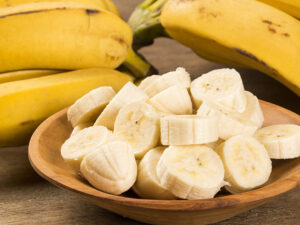
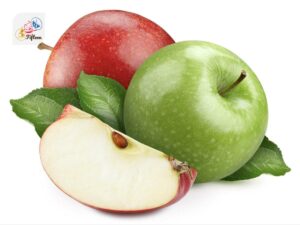
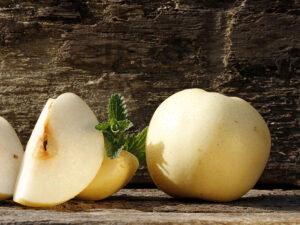
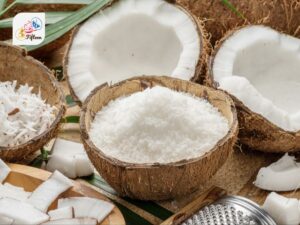
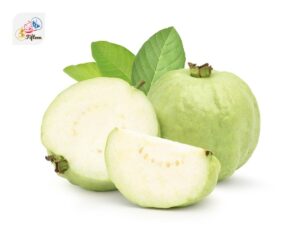
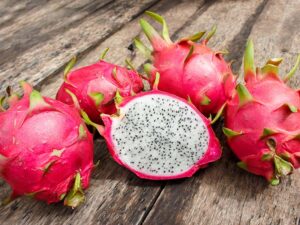
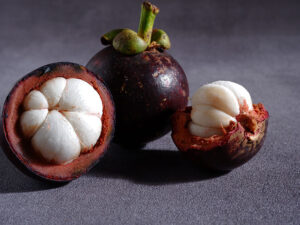
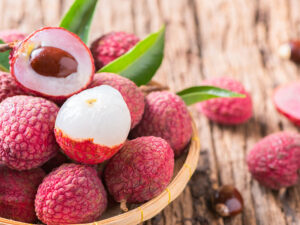
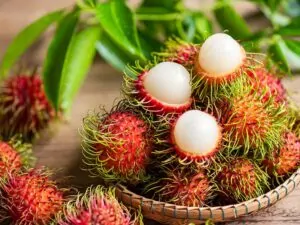
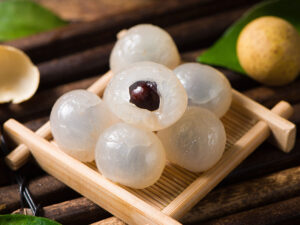
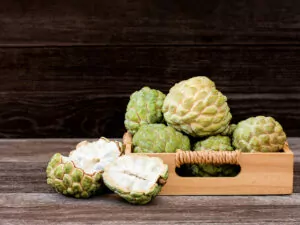
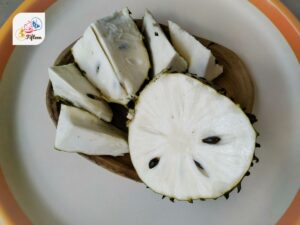
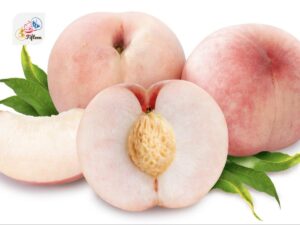
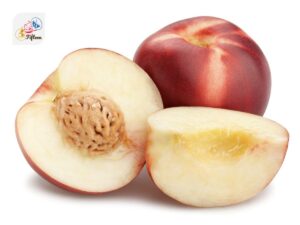
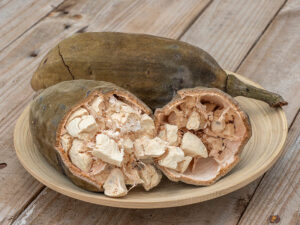
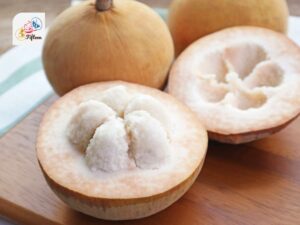
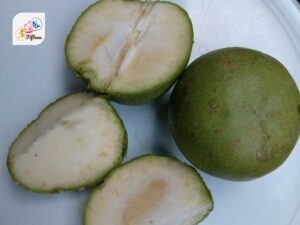
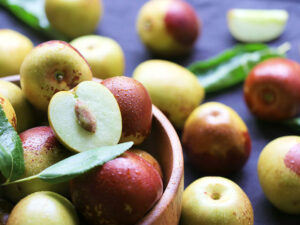
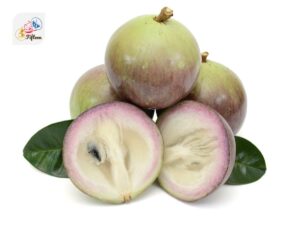
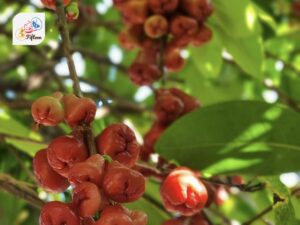
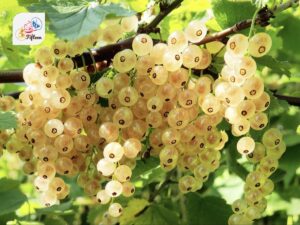
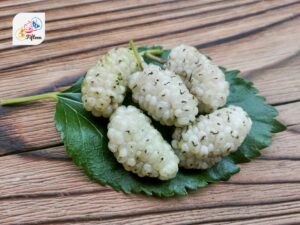
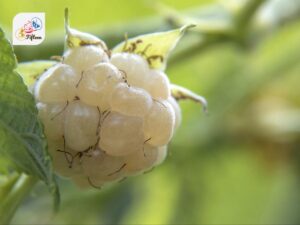
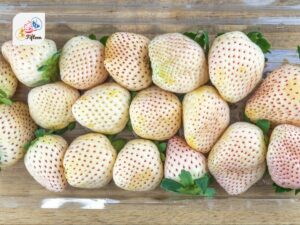
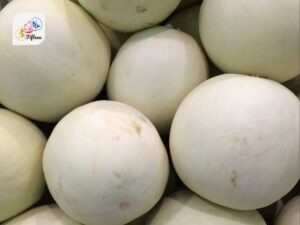
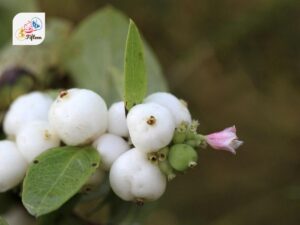
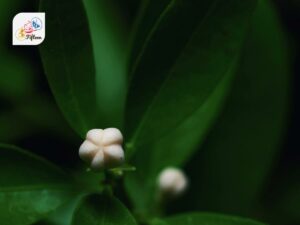
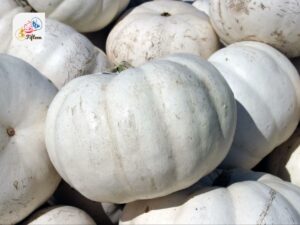

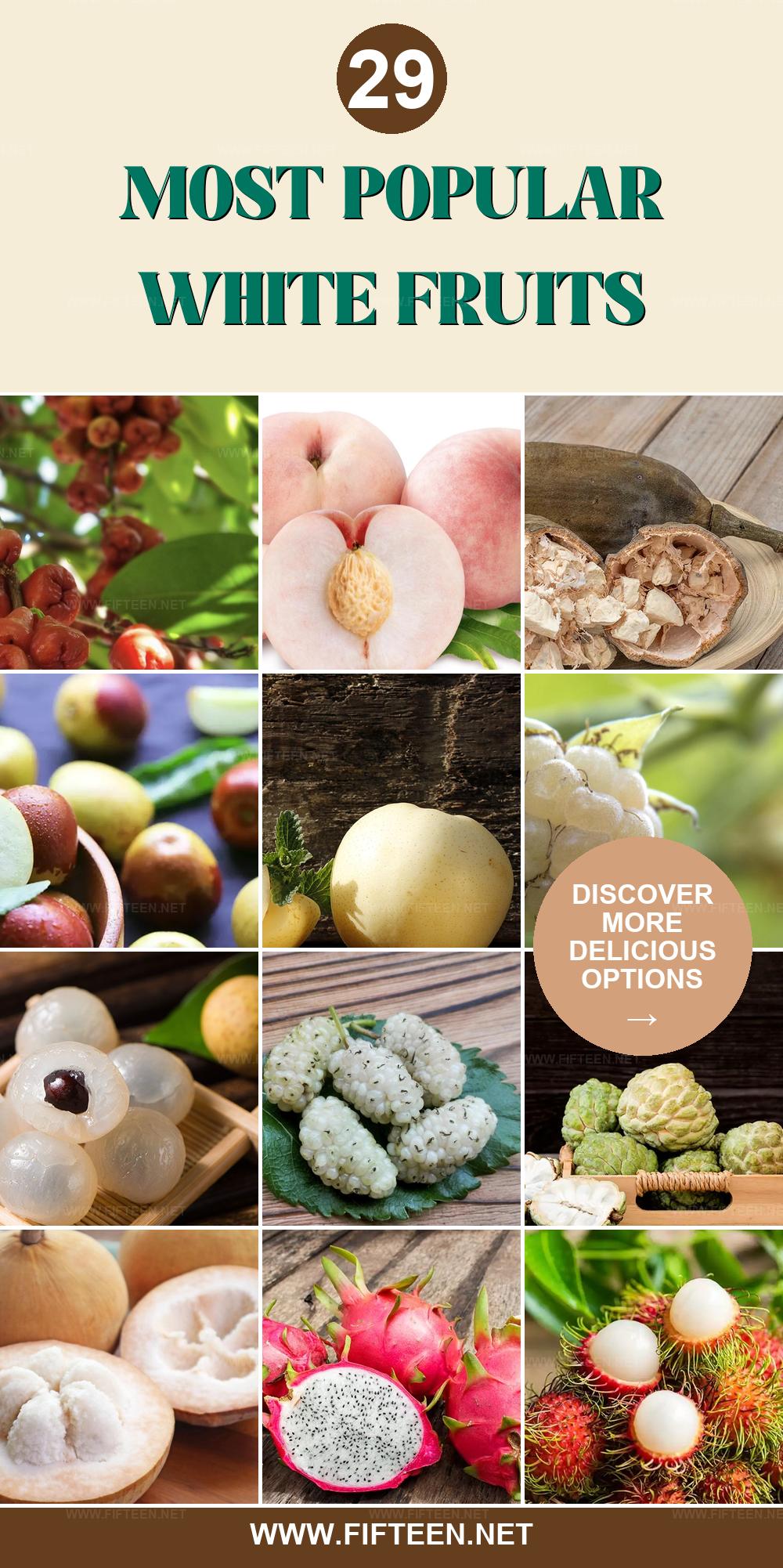
Jamie Scott
Editor in Chief, Senior Content Writer
Expertise
Home Cooking, Meal Planning, Recipe Development, Baking and Pastry, Food Editor, Cooking-video Maker, Western Food Evaluation Expert
Education
Le Cordon Bleu College of Culinary Arts
Local Community College, New York, NY
Jamie Scott is a skilled culinary expert and content creator specializing in Western cuisine. With over 15 years in the culinary field and formal training from Le Cordon Bleu, Paris, Jamie deeply understands how to blend nutrition with delicious flavors. His passion for cooking matches his commitment to making healthy eating accessible and enjoyable.
On Fifteen.net, Jamie brings a fresh perspective to classic dishes and beverages, offering readers insightful recipes, cooking tips, and a fresh view on meal planning that emphasizes taste, health, and simplicity.